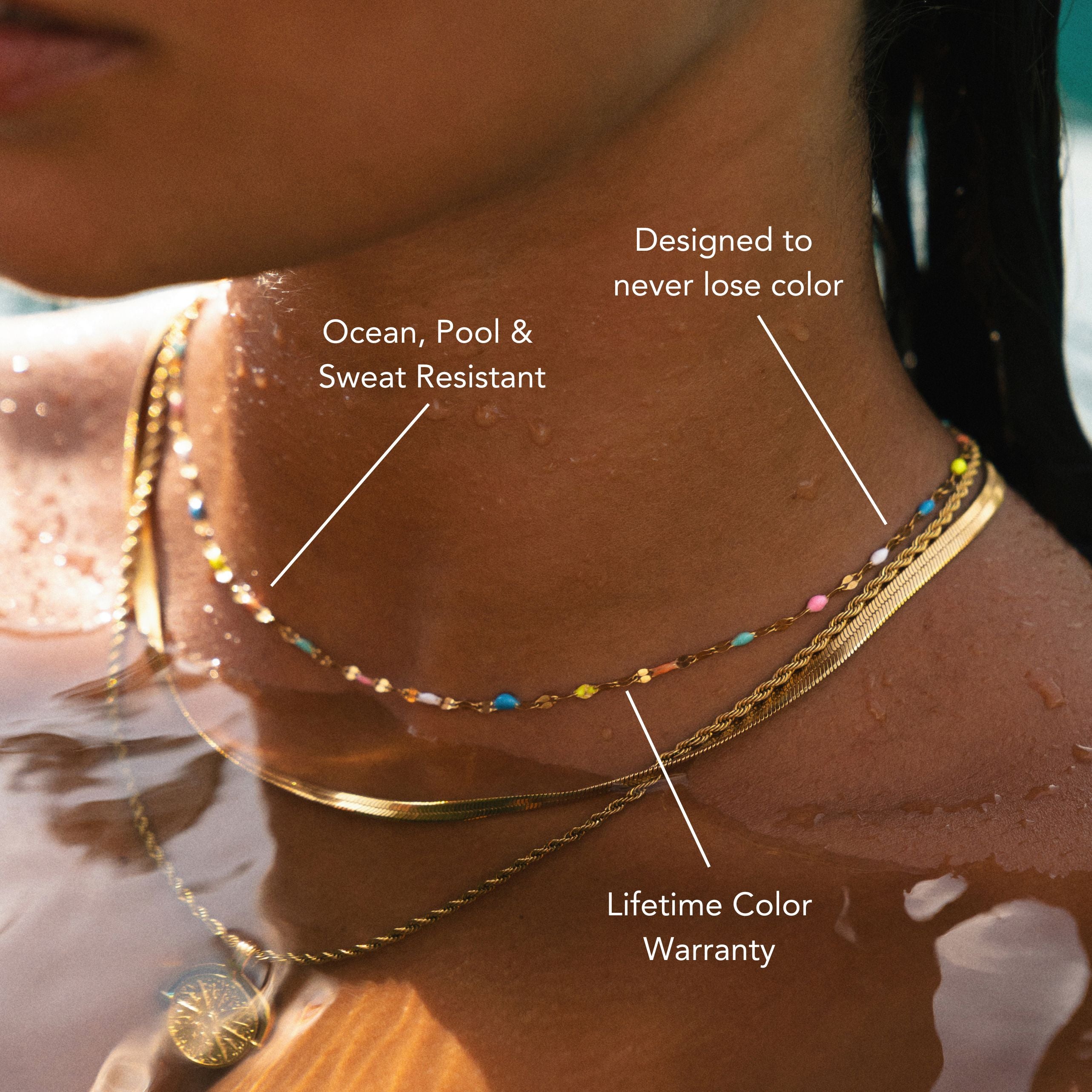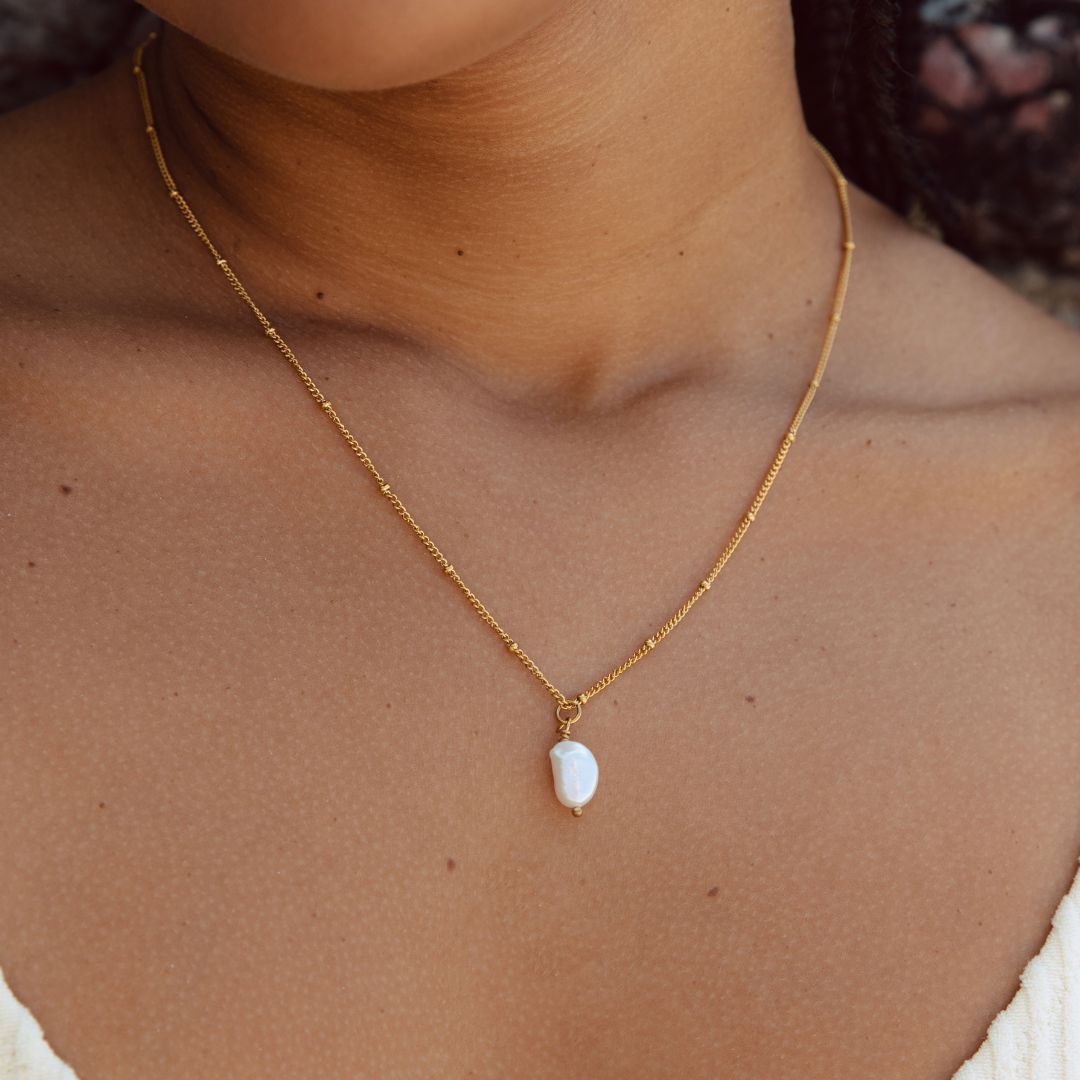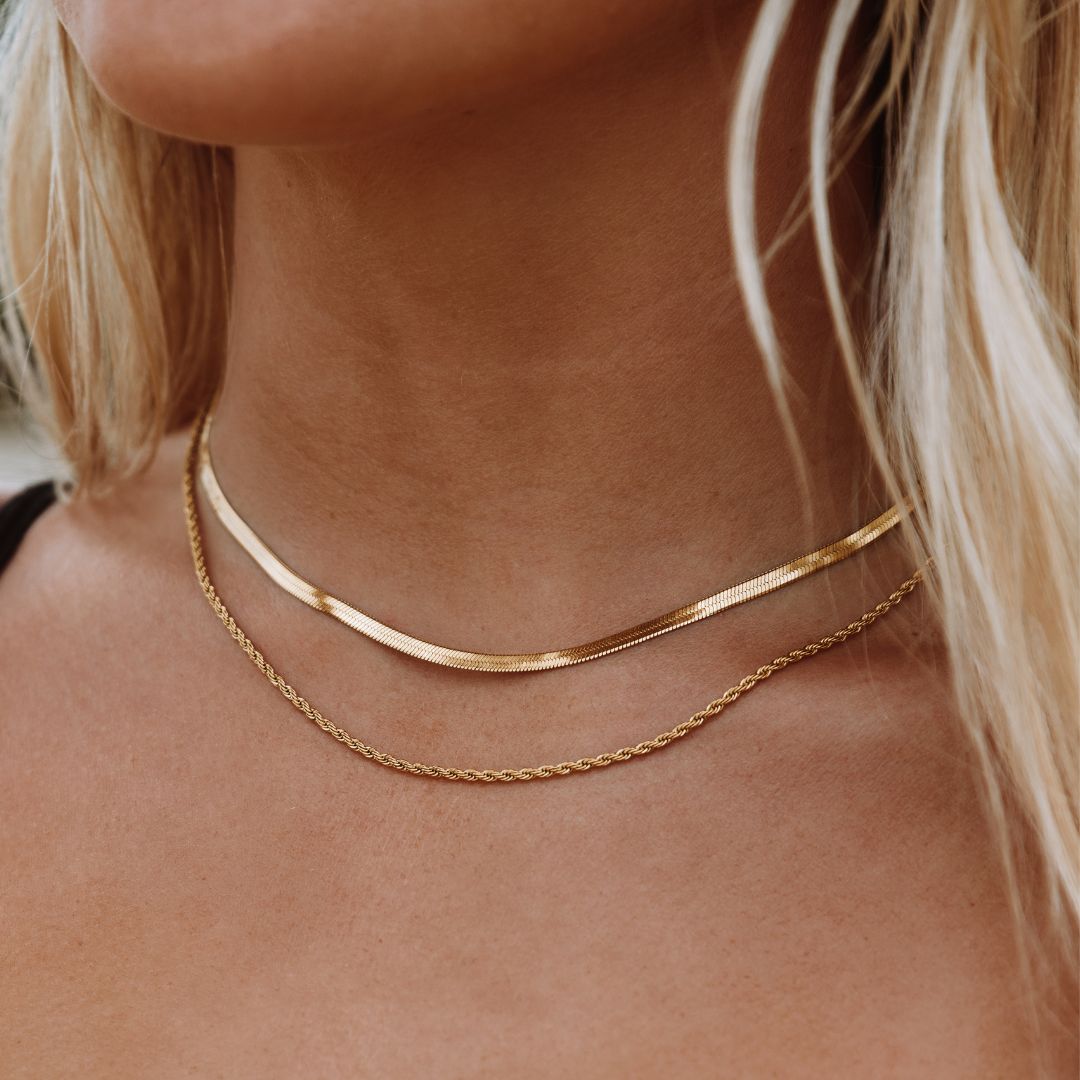
Can You Resize a Ring Bigger? Here’s How
Can you resize a ring bigger? Yes, you can resize a ring bigger using specific techniques. If you're looking for a small increase, stretching the band can work well. For larger adjustments, a jeweler may cut the band and add matching metal, ensuring a seamless look. Keep in mind that the type of material and design complexity affect resizing options. Softer metals like gold are generally easier to work with, while intricate designs pose challenges. Always consult a qualified jeweler to avoid potential damage. By exploring further, you'll uncover essential tips on the best practices for resizing and caring for your ring—check out our Waterproof Rings collection for durable options.
Understanding Ring Resizing
When it comes to resizing a ring, understanding the process is vital for achieving the desired fit without compromising the ring's integrity.
Ring resizing involves several techniques that can effectively alter the ring size while maintaining its aesthetic and structural quality.
The two primary resizing techniques are stretching and adding material. Stretching is suitable for minor adjustments, usually up to half a size. A jeweler uses specialized tools to gently expand the band, guaranteeing the metal remains intact and the design isn't altered.
For more significant changes, adding material is necessary. This involves cutting the band and inserting a piece of metal, matching the original ring's material for consistency.
Both techniques require skill and precision to prevent damage and guarantee a seamless look.
It's important to choose a reputable jeweler who understands the specific properties of your ring, including its metal type and design intricacies.
Proper care during the resizing process will help maintain the ring's beauty and longevity.
Factors Influencing Resizing
Several factors influence the resizing of a ring, and understanding these can help you make the best decision for your jewelry.
First, the size measurement is essential. Accurate measurements guarantee the ring fits comfortably after resizing. If the size change is significant, it might complicate the process.
Next, consider the ring materials. Different materials respond differently to resizing techniques. For instance, metals like gold and silver are easier to work with, while harder materials like titanium or tungsten may present challenges.
Some gemstones might also affect the resizing process, as they can be sensitive to heat or pressure.
Additionally, the design of the ring plays a role. Intricate designs, such as those with engravings or inlays, may limit how much you can resize the ring.
If the band is too thin, it mightn't withstand resizing without weakening.
Common Resizing Methods
Resizing a ring typically involves several common methods, each suited to different types of rings and resizing needs.
One popular method is the stretching technique, where a jeweler gradually enlarges the band using specialized tools. This method works best for softer metals like gold or silver and is often less costly than other options.
Another common method is inserting a sizing bar or additional metal, which involves cutting the band and adding the resizing materials. This technique is ideal for more intricate designs or rings made of harder metals, like platinum. However, resizing costs can increase due to the complexity involved.
For rings with gemstones, such as those with a raised setting, it may be necessary to adjust the prongs or even reposition the stones to maintain aesthetics. This can add to the overall resizing costs.
Ultimately, the method chosen will depend on your specific ring, its material, and your budget.
Always consult with a professional jeweler to determine the best approach for resizing your ring effectively while preserving its integrity and beauty.
Choosing a Professional Jeweler
Choosing a professional jeweler is crucial to guarantee your ring resizing is done accurately and safely. Start by evaluating the jeweler's qualifications. Look for certifications from recognized organizations, such as the Gemological Institute of America (GIA) or the American Gem Society (AGS). These qualifications indicate a jeweler's expertise in handling intricate tasks like resizing.
Next, consider customer reviews. Take the time to read feedback from previous clients, as these insights reveal the jeweler's reliability and craftsmanship. Look for consistent comments regarding their quality of work, professionalism, and customer service. If possible, ask for recommendations from friends or family to find a jeweler with a solid reputation.
Additionally, visit the jeweler's shop to assess their work environment. A clean, organized space often reflects a jeweler's attention to detail and commitment to quality.
During your visit, don't hesitate to ask questions about their resizing process and techniques. A knowledgeable jeweler will be happy to explain their methods and address any concerns you may have.
DIY Resizing Techniques
If you need to resize your ring at home, you can explore methods like using ring sizing kits or the heat and stretch technique.
These DIY approaches can help you achieve a better fit without professional assistance.
However, it's crucial to follow the instructions carefully to avoid damaging your ring.
Using Ring Sizing Kits
A ring sizing kit can be an effective solution for those looking to adjust their ring size at home. These kits typically include a variety of measuring tools designed to help you accurately determine your current ring size and make necessary adjustments.
You'll usually find a set of plastic or metal ring sizers, which can be slipped onto your finger to find the best fit.
To use a ring sizing kit, start by selecting a sizer that feels comfortable. Once you find the right fit, note the corresponding size on the provided chart. If your ring is too small and needs resizing, you can use the included sizing beads or an adjustable band to temporarily increase its size.
Always verify you're measuring in a warm environment, as cold fingers can lead to inaccurate readings. Some kits may also offer digital measuring tools, providing precision for those who want to verify an accurate fit.
Heat and Stretch Method
The heat and stretch method is a popular DIY technique for resizing a ring larger. This method leverages heat application to induce metal expansion, allowing you to widen the band more easily.
First, gather your materials: a butane torch or a heat source, a mandrel, and a pair of protective gloves.
Begin by cleaning the ring to remove any dirt or oils that could interfere with the heating process. Carefully apply heat to the area you want to resize, ensuring an even distribution to prevent damage. Monitor the metal closely; it should become red-hot but not melt.
Once it's adequately heated, place the ring on the mandrel. Using a rubber mallet, gently tap the ring, applying gradual pressure to stretch it. Pay attention to the size, checking frequently to avoid oversizing.
After achieving the desired size, let the ring cool naturally; sudden temperature changes can cause cracking. Finally, polish the ring to restore its finish.
Limitations of Resizing
Resizing a ring bigger comes with several limitations that can impact the final result. One of the primary resizing challenges is the type of metal used. Some metals, like platinum, are more difficult to resize due to their density, and significant alterations can compromise the ring's integrity.
Additionally, if your ring features intricate designs or engravings, resizing might distort these details, affecting its aesthetic appeal.
Another limitation involves gemstones. If your ring has a set stone, resizing can place undue stress on the setting, leading to potential damage or loosening of the stone. You'll also need to take into account your personal preferences; a larger size mightn't always align with your ideal fit or comfort.
In some cases, a ring can only be resized to a certain extent—usually up to one or two sizes larger. Going beyond that can drastically alter the ring's structure, making it less durable.
Understanding these limitations is vital before deciding to resize your ring, as they can influence both the quality of the resizing process and the look of your cherished accessory.
Caring for Resized Rings
Caring for resized rings requires special attention to maintain their integrity and appearance. Start with regular cleaning to remove dirt and oils that can accumulate over time. Use a gentle soap and water solution, along with a soft cloth or brush, to avoid scratching the metal.
Always dry the ring thoroughly to prevent water spots.
Next, consider avoiding exposure to harsh chemicals, which can damage both the metal and any gemstones. Remove your resized ring during activities like cleaning or exercising to reduce the risk of damage or loss.
It's also essential to schedule periodic professional check-ups. Jewelers can assess the ring's condition, ensuring that the resizing hasn't compromised its structure. They can also tighten any loose stones, adding an extra layer of protection.
Lastly, don't forget about resized ring insurance. It can provide peace of mind in case of loss or damage. Make sure your policy reflects the ring's new value after resizing.
Following these ring maintenance tips will help keep your resized ring looking beautiful for years to come.
When to Consider Replacement
When resizing your ring, consider replacement if you need a significant size increase that compromises the ring's integrity.
If your ring shows signs of damage, such as cracks or severe wear, it may be more practical to replace it rather than attempt further resizing.
Assess these factors carefully to guarantee you maintain the quality and appearance of your jewelry.
Significant Size Increase
A significant size increase in a ring often necessitates considering replacement rather than resizing. When you're looking to increase a ring's size by more than two sizes, the structural integrity of the ring may be compromised.
Most resizing materials have inherent size limitations, which means that pushing beyond those limits could lead to issues like warping or weakening the band.
If you've got a ring made from a material that's difficult to resize, such as tungsten or ceramic, the risk of damage increases.
Even precious metals like gold can face challenges; while they're generally more malleable, excessive resizing mightn't yield satisfactory results.
In cases where the increase is substantial, replacement becomes the more viable option. This guarantees you maintain the ring's aesthetic and structural quality.
Additionally, a replacement allows you to select a design that fits your current style and preferences, rather than merely adapting an existing piece.
Ultimately, if you're contemplating a significant size increase, consult a professional jeweler. They can provide guidance on whether resizing is feasible or if a new ring is the best route to take.
Damaged Ring Condition
Evaluating a damaged ring is essential in determining whether a repair is possible or if replacement is the smarter choice.
First, assess the extent of the damage. If the integrity of the band is compromised—like severe bending, cracking, or metal wear—repair mightn't restore it to a reliable condition. In such cases, consider replacement.
Don't fall for resizing myths. Many believe that any ring can be resized, but if the damage affects the ring's structure, resizing may further weaken it.
Furthermore, if your ring has significant historical value or intricate designs, a repair could alter its original craftsmanship, diminishing its worth.
Additionally, consider the ring's history. If it's a family heirloom, you might prioritize restoration over replacement, but make certain the repair doesn't compromise its value.
If it's a newer piece and the damage is extensive, replacement could be more cost-effective and aesthetic.
Ultimately, consult a professional jeweler. They can provide insights into the ring's condition, guiding you through your options for repair or replacement while making sure you make the best decision based on your specific situation.
Frequently Asked Questions
Can All Ring Materials Be Resized?
Not all ring materials can be resized due to resizing limitations. For instance, certain metals like titanium or tungsten resist alterations. Regular ring maintenance can help identify resizing needs before they become more challenging.
How Long Does the Resizing Process Take?
The resizing process typically takes a few days to a week, depending on the resizing techniques used and any resizing limitations related to the ring's material. Always consult a professional jeweler for accurate timeframes.
Will Resizing Affect the Ring's Warranty?
Resizing a ring can impact warranty implications depending on the jeweler's resizing policies. Always check your warranty terms before proceeding, as some adjustments may void coverage or require specific conditions to maintain the warranty's validity.
What Is the Cost Range for Resizing a Ring?
Resizing a ring typically costs between $20 and $100. Cost factors include the material, complexity of resizing techniques, and the jeweler's expertise. Always consult a professional for an accurate estimate based on your ring's specifications.
Can Resizing Change the Ring's Original Design?
Resizing a ring can impact its design integrity and aesthetic balance. Depending on the method used, alterations might distort original patterns or settings, so it's essential to consult a professional jeweler for ideal results.
Conclusion
In summary, resizing a ring to a larger size is entirely possible, but it requires careful consideration of various factors and methods. Whether you choose to visit a professional jeweler or attempt a DIY technique, understanding the limitations and potential risks involved is essential. Always prioritize quality craftsmanship to maintain the integrity of your ring. If resizing isn't feasible, considering a replacement might be the best option. Proper care will guarantee your resized ring remains beautiful and functional.
























Leave a comment
This site is protected by hCaptcha and the hCaptcha Privacy Policy and Terms of Service apply.